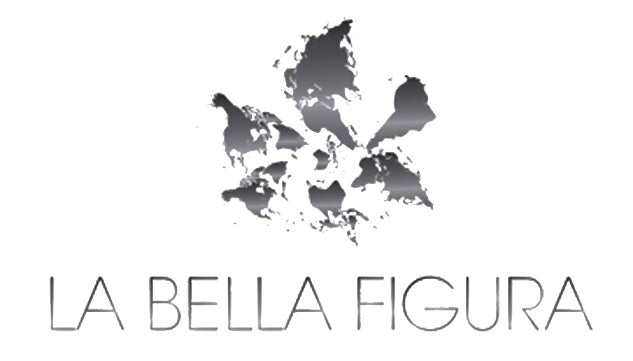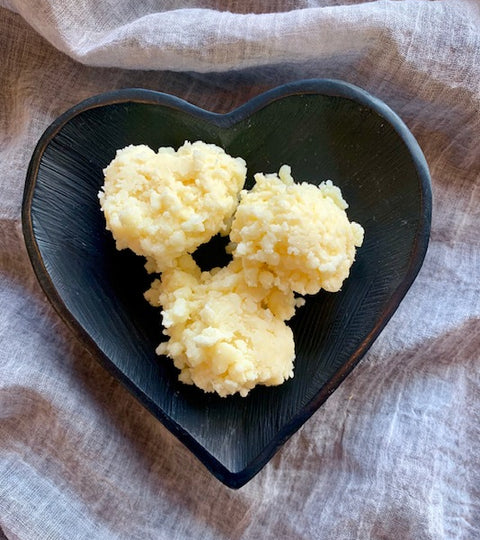
This month we’re re-introducing our Rainforest Hydration Treatment after a year in hiatus due to a fundamentally difficult sourcing issue. After what felt like an endless search to restock our Illipe butter, we decided to reformulate the product with more sustainable and advanced ingredients. The new formula is entirely different from the original. We eliminated coconut, cocoa, jasmine, olive wax and have included more viable ingredients, which are either hand-pressed or supercritical extractions. The formula is unique because of a special technique that honors the natural chemistry profile of some of our ingredients. Specifically, our Mango, Murumuru and Cupuacu butters. We’ve been using Cupuacu for a while in our cremas and in our balm cleansers. You may not know it’s considered an “advanced” ingredient in the skincare world. I want to focus on the brilliance of this Amazonian plant butter because I believe there is no other like it and I’m a believer in its ability to support all skin types.
The pulp of the fruit is where the fatty butter is found and Cupuacu is proficient in complex lipids. Some formulators consider it a modern plant-based alternative to antiquated lanolin, which can trigger allergies and is a major sensitizer for many people. Cupuacu butter offers an ability to penetrate the skin quickly and then to hold moisture. It has been studied in various tests and proven to attract 440% more water allowing it to function much more effectively as a skin hydrator and plumper. Its hydrophilic (water-loving) properties carries water to the skin allowing it to make skin supple, soft and more elastic. This is why it’s considered an advanced ingredient. It's naturally intelligent in knowing exactly how to support dry and dehydrated skin. I'm a firm believer that native plants take care of issues that are more prominent in certain regions. In this case, the Brazilian Amazon where indigenous people use this plant butter to protect their skin from wounds and UV damage.
In this new formula we wanted to offer more of this hydrophilic ability so that our balm keeps skin both hydrated and moisturized. The process of hydration is to bring water to the skin, which all skin needs while moisture brings oils to the skin to lock in hydration and protect the lipid barrier. These are two different things and often when our clients share they suffer from dry skin we often discover they aren't combining these efforts to maximize results.
Cupuacu is the first ingredient and every single one that follows is just as important to nourish and nurture your complexion. Because Cupuacu is unique in its exquisite ability to prevent transepidermal water loss we needed to develop a technique to hold our balm together so the fatty acids didn’t surface to the top adding to graininess. (Graininess is not always negative as it means the material is rich in plant esters and polyphenols.) We want each application to be a mega dose of this formula's abundance in phytosterols, antioxidants, vitamins and minerals so it not only creates a barrier, but a nutrient dense one.
Our process is never to overheat plant materials that can kill beneficial compounds during formulation development. This, unfortunately is a common occurrence that happens in formulation with developing balms because the goal is smoothness. The melt down process must be handled with extreme care so important cofactors, like enzymes and beneficial acids aren't destroyed. I decided not to add an emulsifying agent like olive wax or gums to allow the formula to be more pristine on your skin. While waxes and gums can help bind balms, the inclusivity of Cupuacu and Murumuru offers natural lipids that bind beautifully and render the need for an emulsifier unnecessary. My goal was to develop a formula so intact in bioactivity, it was almost akin to scooping it up straight from the fruit growing in the Brazilian Rainforest.
There is a need to be innovative in our approach to honor the ingredients we work with, keep nutrients intact and provide the results we seek. Experimentation is when formulators can ascend their creations and it was a joyous moment after many experiments when my method finally paid off. (Thanks mom for supporting me through all my crazy science experiments and many fairs.) The result, is an almost velvety texture that melts instantly into the skin, absorbing quickly and relieving tightness immediately. This product is even dreamier when paired with our Jardín de Fleurs Skin Hydrator, which contains hyaluronic acid and can be layered over serums and moisturizers to seal nourishing ingredients. I recently shared it with a friend who claimed, “I don’t know what you guys do to make everything feel so lush and smell so gorgeous yet not overwhelming.” Indeed this is a combination of using raw material (Cupuacu smells like what I imagine the skin of angels must smell like. Sweet/sour, boozy cocoa-liquor with a hint of petrichor) and balancing them just so. My goal was to offer a scent profile for RHT that encapsulated the rainforest on a summer morning when the dew is still bursting with floral freshness. I hope you think so too. Of course the inclusion of CO2 extracts and essential oils must always merit their benefits in a formula rather than just attribute a delicious scent profile. (There’s so much more to this product and I could write an entire book about it so if you’re interested I’ll be answering questions on Instagram this Friday, October 25 at 10 am CT. Ask away!)
That is essentially the background highlight of just one ingredient in this formula. When approaching formulation, education is as important to the process as are good ingredients. One must have passion for research. Patience with experimentation and a desire to understand how ingredients can offer health benefits. I've been known to store certain raw materials in dark cabinets under temperature controlled environments, covered in special cloths and away from light. Our ingredients are raw and require special attention so they don't degrade. I fell in love with Murumuru butter, which I've never used before and was so impressed I incorporated into RHT. It offers a silky, glossy texture in formulation, which lends a beautiful melt to our balm upon application. It literally seeps right into the skin. Murumuru is abundant in lauric acid, offering antibacterial benefits aiding acne prone skin without being comedogenic. It was important to us to develop a more targeted product with a wider range for many skin types. RHT is excellent for dry, dehydrated, sensitive, acne prone, mature and eczema skin types. (The only skin type we would recommend being cautious with use is extremely reactive skin.) Pair this balm with Jardin de Fleurs and it will work like a dream to alleviate tightness and seal the skin with nourishment. A little goes a long way.
I learned a few lessons with sourcing. I'm such a seeker of excellence that I made the mistake of not working with material less rare and easier to come by in pursuit of quality. These days it's super important to us that ingredients are easy to bring home. Not simply because it will make my life as a formulator and with ingredient sourcing easier, but also to cause less of a carbon footprint to the environment. Some materials are too precious to work with on the scale that we do and as much as I adore them I would rather they exist in their natural habitat, untouched by humans than become endagered because of over-harvesting for profit. Many of us that create our own formulas and manufacture in-house find ourselves in these predicaments where demand is high and sources can become scarce. I have since found it more important to work with materials that grow abundantly, indigenously and sustainably. I've also been working on a more local level to try and grow thriving plants to create new benefits from. (Remind me to tell you about our blue tansy project. For another post, no doubt.) By using more sustainable ingredients we could also afford to buy in larger bulk, which has reduced our cost a bit and in turn allows us to reduce the unit cost for this rendition of RHT. I know that's a bit unheard of. Many brands increase prices when materials become expensive, but rarely do they decrease prices when materials become less costly and more sustainable. Essentially, my responsibility is always to bring you resplendent formulations and to be a gracious human towards the plant world I so dearly love and rely upon. I hope you adore our new formula and beautiful Rainforest Hydration Treatment as much as we do.


1 Comment
This is so exciting! I loved the original rainforest treatment, but it sounds like this is even better. Thank you for passing savings on to your customers. I love how you explain these details.